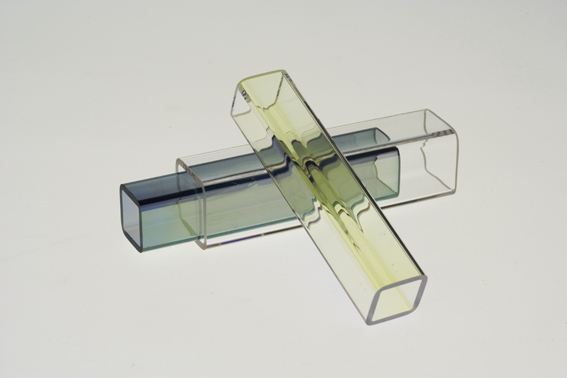Industrial use of atomic layer deposition in optics
One of the reasons for this blog is to explain where atomic layer deposition can be used. The plan is to share as many examples from the industry as we can. Earlier we shared examples of industrial use of ALD in moisture barriers. Now we continue with another typical area of ALD applications: Optical coatings.
With the right choice of materials, good optical stack design and precise control of layer thickness, it is possible to build ALD coatings that alter the behavior of light in the desired wavelength range, be it IR, UV or visible light.
Thin film coatings can be used to improve the optical characteristics of objects and components in a multitude of areas, from LED illumination and micropore optics to lenses, wire-grid polarizers and diffractive optics.
In the following, we will give two practical examples where Beneq customers use atomic layer deposition to enhance the optical performance of their products: anti-reflective coating of lenses and infrared filter coatings inside tubes.
Example 1: Anti-reflective coatings on high curvature lenses
Anti-reflection coatings are needed in many optical devices to control performance losses due to lost light or simply to remove reflections that may decrease the quality of images and signals.
Anti-reflective coatings can be implemented with many technologies, such as sputtering and thin film evaporation systems, but many of the traditional anti-reflection treatment methods are limited when it comes to the size and shape of substrates. They simply don’t work well on large substrates and high aspect ratios. This often results in complicated mechanical solutions where the objects need to be turned and spinned during the vacuum processing.
With atomic layer deposition, anti-reflection coatings with extreme conformality and uniformity can be applied to large surfaces and items of any shape without any moving equipment parts.
One popular practical application is to apply AR-coatings on lenses with high curvature, where ALD enables uniform coating thickness on the curved surface. And since it can be realized without any complex moving substrate holders, the coating capacity is high and the cost competitive. For event faster processing, optical coatings of this kind could also be applied in spatial ALD processes, for example with the rotary ALD equipment we announced last month.
Example 2: Infrared cut-off filters inside tubes
One of the main benefits of atomic layer deposition is the ability to coat surfaces with complex shapes. In the area of optical coatings, selecting ALD as the coating technology makes possible various types of multi-layer films inside objects that are difficult or impossible to cover with other coating technologies.
Coating technologies that are adequate for covering flat surfaces, such as PVD (physical vapor deposition), fail to provide conformal and uniform coatings inside tube-like objects. Other technologies that may sometimes be used for coating hollow items, such as sol-gel processes, can only provide a simple single-layer coating with compromised uniformity control.
If you wanted to control, say, the infrared radiation going into a glass tube, you would need to apply an infrared cut-off filter stack. The ideal place for the coating would be inside the tube, where the stack would be nicely protected from external wearing. But options are scarce for creating conformal coatings like that inside a tube: It is best to go with atomic layer deposition. This kind of optical coatings are typically manufactured with high capacity batch ALD equipment, such as the Beneq P400 or the Beneq P800.
Atomic layer deposition is the most flexible technology for optical coatings
As with moisture barriers, the main benefit of ALD in optical applications is that it enables coating of objects that are difficult to process by other methods and delivers pinhole-free surfaces that are simply impossible to reach with other thin film technologies. Actually, in many applications the optical coatings manufactured by ALD also serve as barrier layers against moisture and corrosive gases.
The precision of ALD offers a great basis for engineering novel optical materials. With the right kind of material experience and ALD process expertise, totally new kinds of optical coatings are possible. Using ALD in this way requires, however, specific know-how about the coating processes, chemistry and materials. For example preventing scattering inside a filter requires management of multi-layer structures with extreme accuracy. It is not a straight-forward thing to handle even for most ALD specialists. For the Beneq Development Services team it is business as usual.

